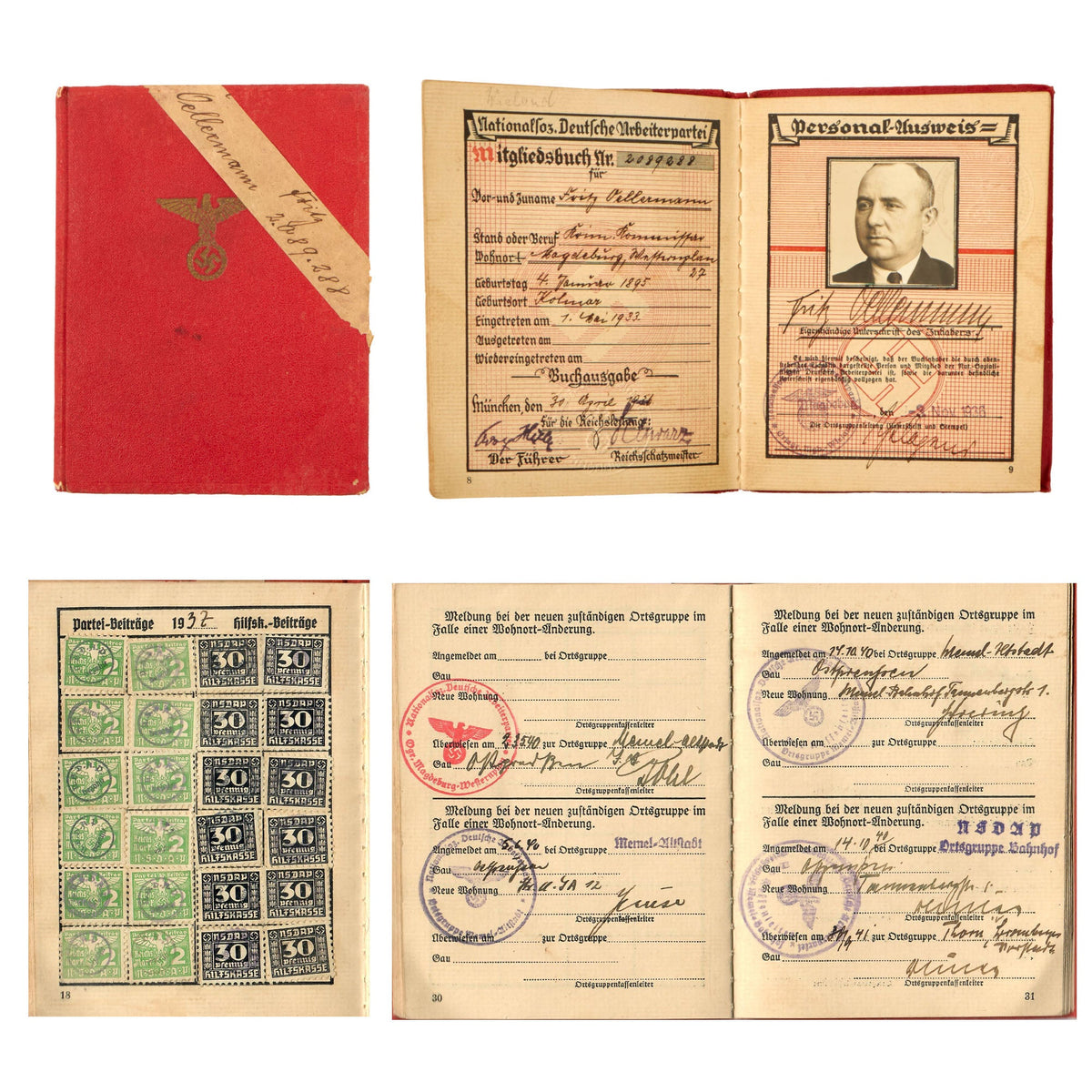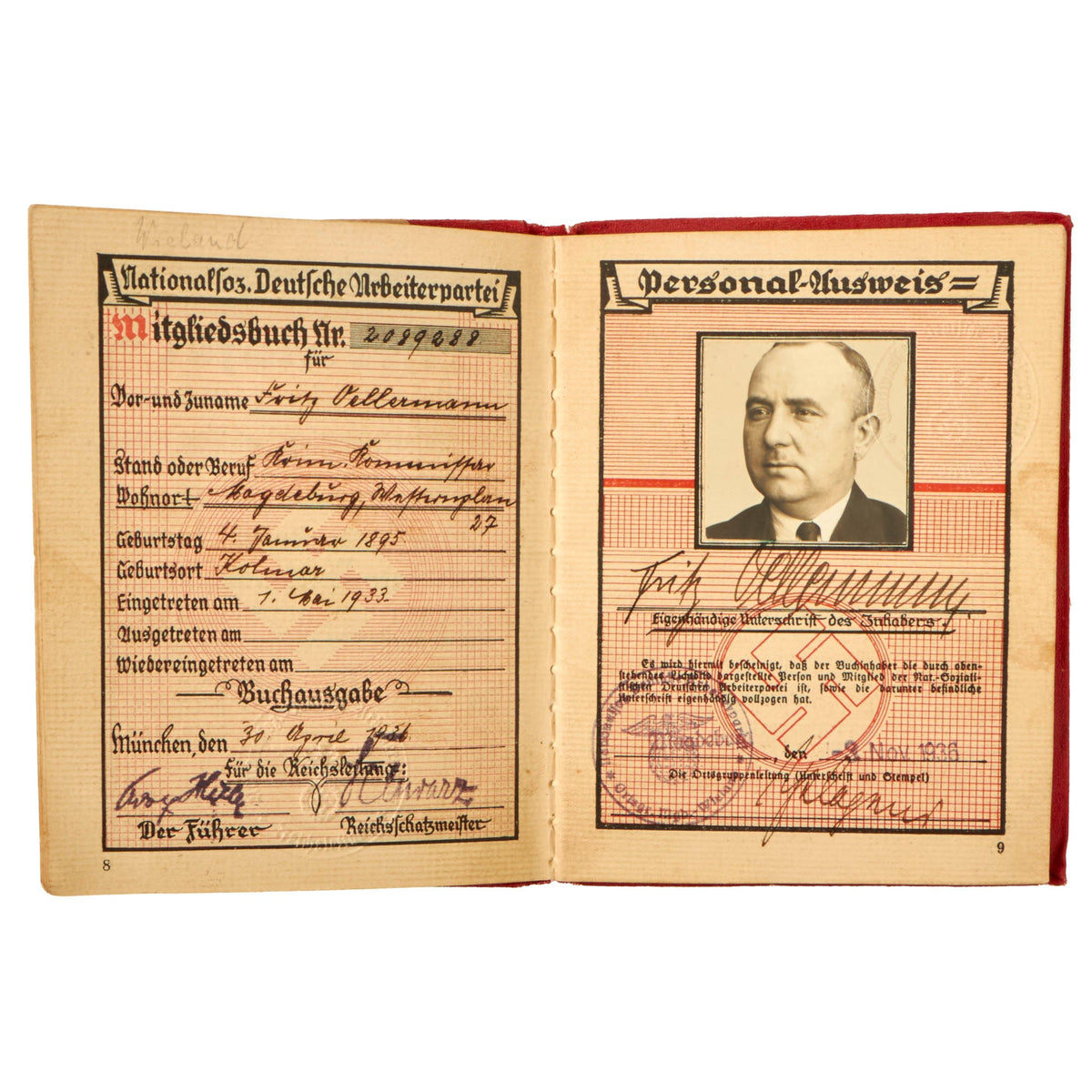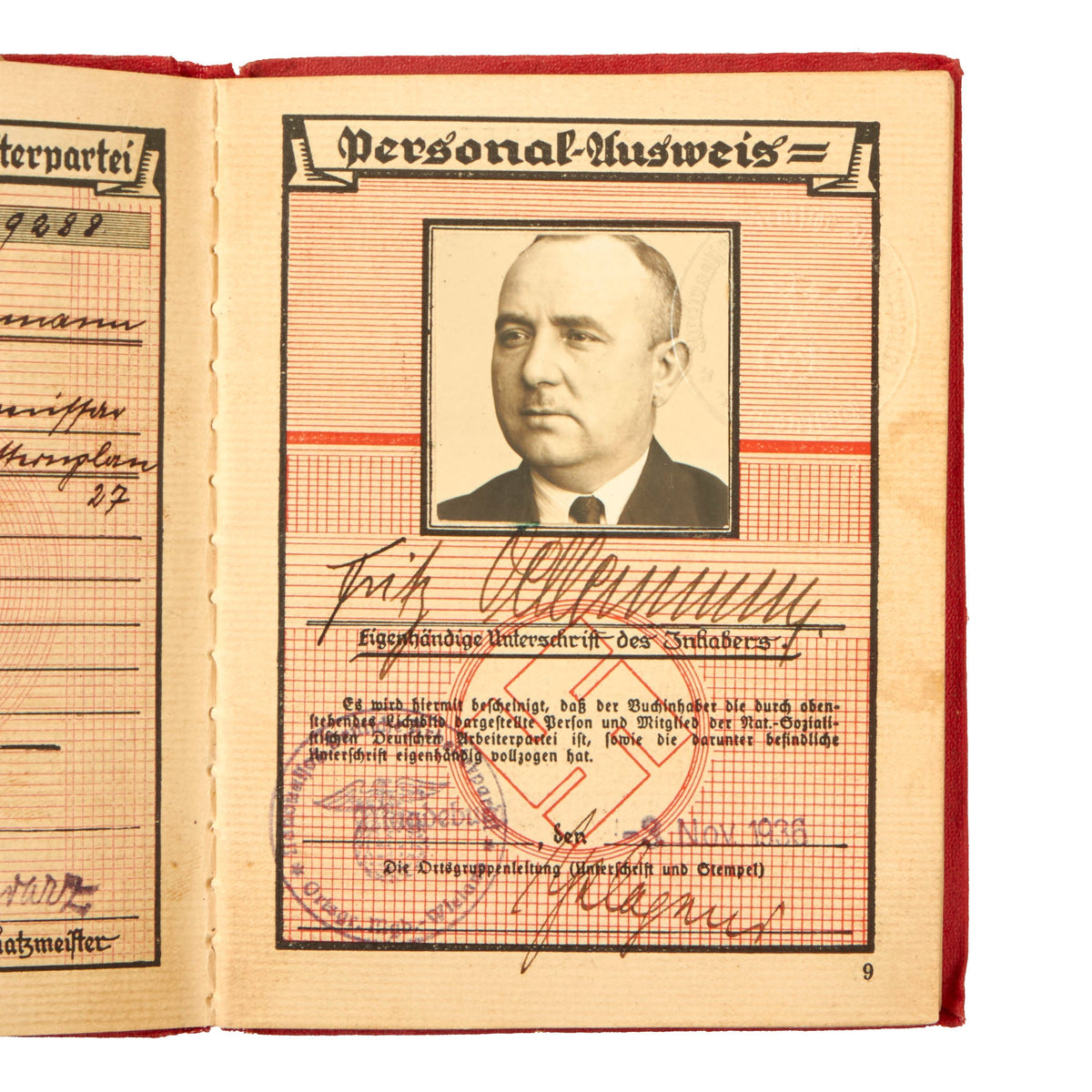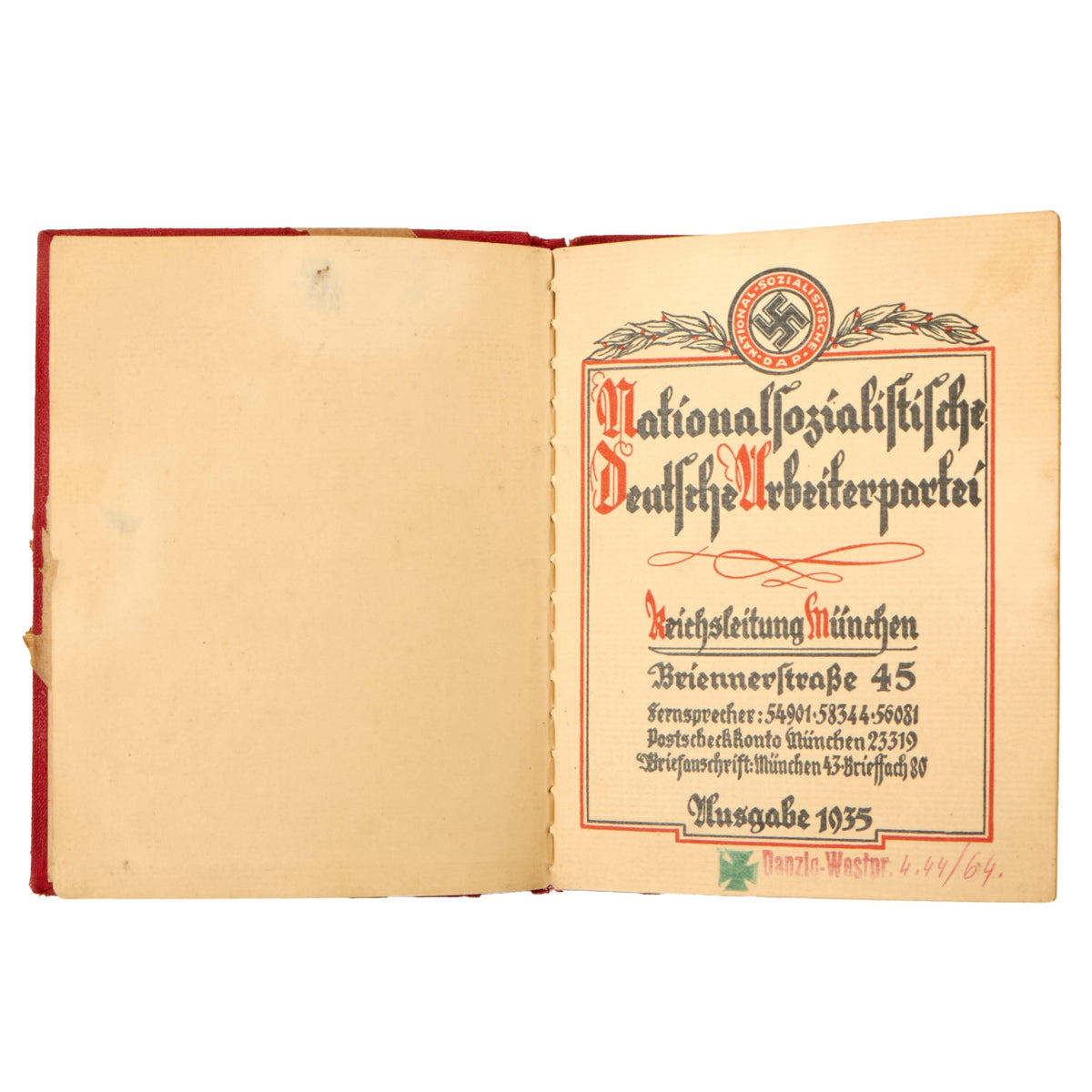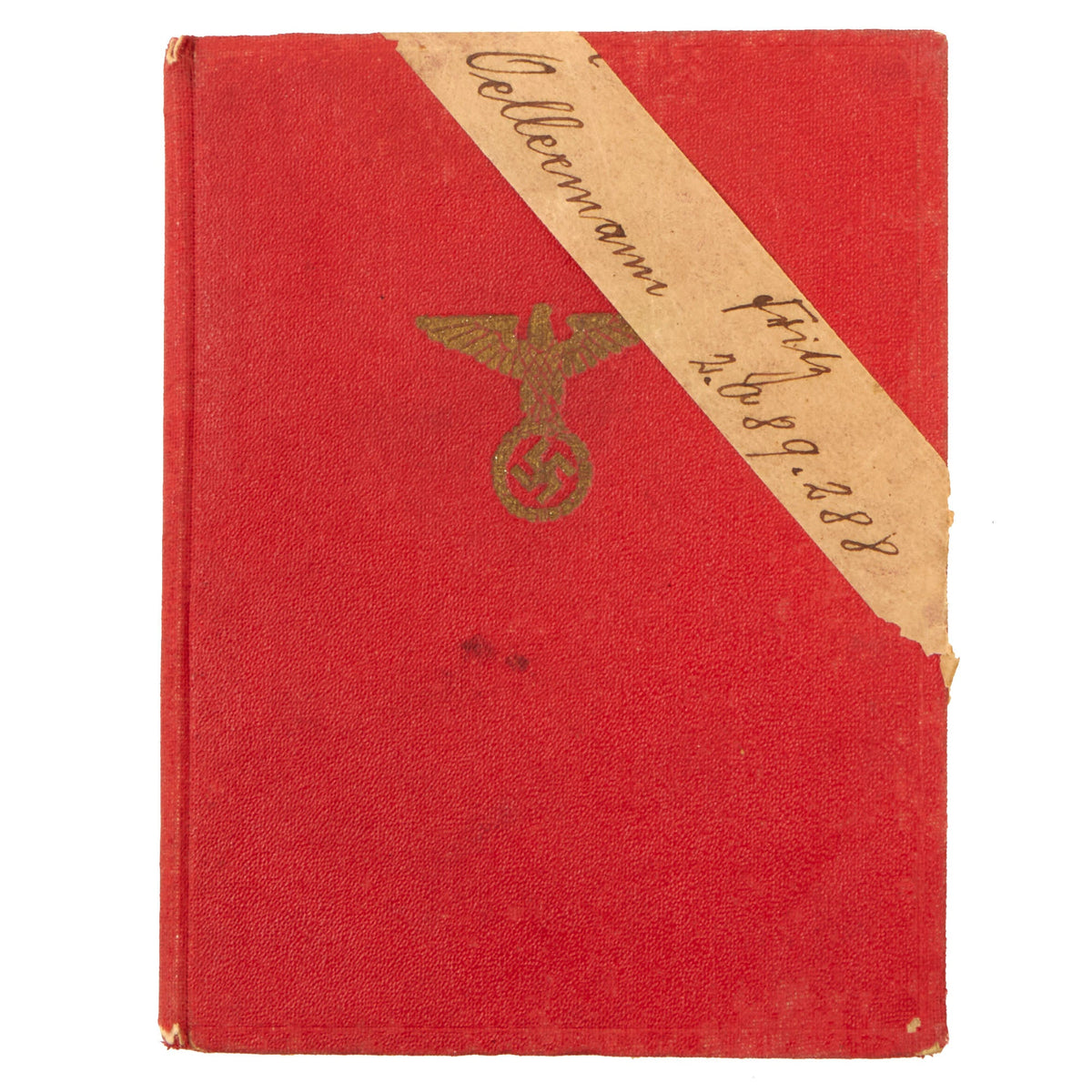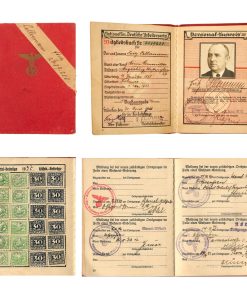Original German Pre-WWII NSDAP Membership Book of Kriminal Kommissar Fritz Oellermann Original Items
$ 495,00 $ 148,50
Original Item: One-of-a-kind. The National Socialist German Workers’ Party (Nationalsozialistische Deutsche Arbeiterpartei), commonly known in English as the NSDAP, was a political party in Germany between 1919 and 1945. It was known as the German Workers’ Party (DAP) before the name was changed in 1920. The party’s last leader, Adolf AH, was appointed Chancellor of Germany by president Paul von Hindenburg in 1933. AH rapidly established a totalitarian regime known as the Third Reich.
All members who joined the NSDAP “party” were given Membership books, which would contain their picture, personal information, and basic information about they party. It also contains pages listing when they paid their Partei-Beiträge (party dues), indicated by stamps, as well as further contributions to the party. It also would contain information regarding any changes in their residential location, as they were required to notify the Ortsgruppe (local group) when this occurred. This tracks the various locations the other was stationed during the NSDAP period.
This NSDAP membership book is named to Fritz Oellermann, born 4. Januar 1895., and a resident of Magdeburg when the book was issued. His Stand oder Beruf (Status or profession) is listed as Krim. Kommissar, a “Criminal / Detective Inspector”. This indicates he was a member of the Kriminalpolizei (Criminal Police), often abbreviated as Kripo, is the German name for a criminal investigation department. “Kriminalkommissar” is listed as a part of the “senior law enforcement service”, and in military rank was roughly equivalent to an SS-Obersturmführer or Oberleutnant. The membership book contains all the correct stamps, and is in very good condition.
Of note: the persons filling out the books often wrote using Kurrentschrift, an older form of Germanic script writing, which is why the all the “u” letters are written as “ŭ”. In this script the lowercase “n” and “u” are identical, so the latter gets the arc shaped mark over it. This is not indicative of an umlaut or other diacritical marking.
These documents make great translation projects, and thankfully this example came with a small summary on a notecard that really helps to summarize the contents. There are date stamps from 1936 up to 1943, and there is also a small Dansig-Westpr. stamp next to a 4.44 / 64. marking, on the first page, which could be another date. This stamp would have come from Reichsgau Danzig–West Prussia, made from captured territories.
Really a great piece of German WWII identification material, ripe for further translation and research!
Fast Shipping with Professional Packaging
Thanks to our longstanding association with UPS FedEx DHL, and other major international carriers, we are able to provide a range of shipping options. Our warehouse staff is expertly trained and will wrap your products according to our exact and precise specifications. Prior to shipping, your goods will be thoroughly examined and securely secured. We ship to thousands clients each day across multiple countries. This shows how we're dedicated to be the largest retailer on the internet. Warehouses and distribution centres can be located throughout Europe as well as the USA.
Note: Orders with more than one item will be assigned a processing date depending on the item.
Before shipping before shipping, we'll conduct a thorough inspection of the items you have ordered. Today, the majority of orders will be delivered within 48 hours. The delivery time will be between 3-7 days.
Returns
The stock is dynamic and we cannot completely manage it because multiple stakeholders are involved, including our factory and warehouse. So the actual stock may alter at any time. It's possible that you may not receive your order once the order has been made.
Our policy is valid for a period of 30 days. If you don't receive the product within 30 days, we are not able to issue a refund or an exchange.
You can only return an item if it is unused and in the same state as the day you received it. You must have the item in its original packaging.
Related products
Uncategorized
Uncategorized
Uncategorized
Uncategorized
Uncategorized
Uncategorized
Uncategorized
Uncategorized
Uncategorized
Uncategorized
Uncategorized
Uncategorized
Uncategorized
Armoured Fighting Vehicles of the World: AFVs of World War One (Hardcover Book) New Made Items
Uncategorized
Uncategorized
Uncategorized
Australian WWII Owen MK1 Machine Carbine SMG Custom Fabricated Replica with Sling Original Items
Uncategorized
Angolan Rebel 1970s era 60mm Inert Display Mortar from Angolan Civil War Original Items
Uncategorized
Armored Burgonet Helmet & Polearm from Scottish Castle Leith Hall Circa 1700 Original Items
